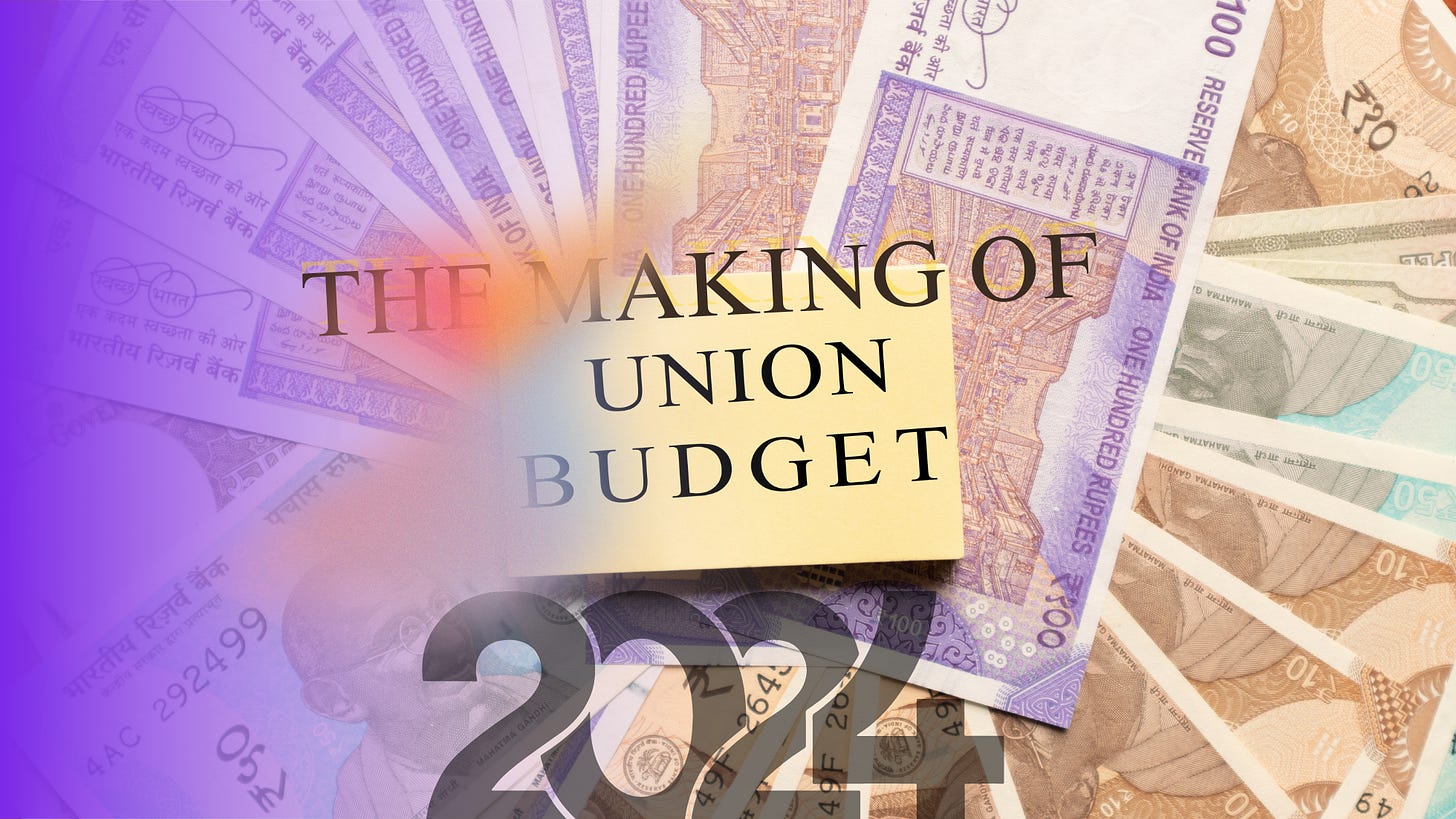The Making of India's Union Budget: A Comprehensive Guide
The meticulous process behind the formulation of the Union Budget and understand how it shapes the nation's economic future.
The Union Budget 2024 is just a week away, and there is growing anticipation about the government plans. This article aims to get a clear picture of what goes on behind the scenes of India's most crucial financial document.
JOIN THE CFO STORY CLUB EVENT AT THE LEELA - BENGALURU ON AUGUST 30
The Union Budget of India is one of the most significant annual financial statements, detailing the government's revenue and expenditure for the fiscal year. Presented by the Finance Minister in Parliament, it not only reflects the government's economic strategy but also its commitment to addressing the nation's socio-economic challenges.
Understanding the intricate process behind the formulation of the Union Budget can provide valuable insights into how economic policies are shaped in India.
The Budget Cycle
The preparation of the Union Budget is a year-long process involving multiple stages and the collaboration of various government departments and ministries. The process can be broadly divided into the following phases:
Pre-Budget Consultations and Forecasting:
Economic Surveys and Forecasting: The process begins with extensive economic surveys and forecasts conducted by the Ministry of Finance. These surveys assess the current economic climate, including growth rates, inflation, fiscal deficits, and other macroeconomic indicators.
Stakeholder Consultations: The Finance Ministry engages in consultations with key stakeholders, including industry leaders, economists, and representatives from different sectors. These discussions help gauge the needs and expectations of various segments of the economy.
Estimates and Proposals:
Revenue Estimates: The Central Board of Direct Taxes (CBDT) and the Central Board of Indirect Taxes and Customs (CBIC) provide revenue projections based on current and expected economic conditions.
Expenditure Proposals: Different ministries and departments submit their expenditure proposals to the Ministry of Finance. These proposals outline their financial needs for the upcoming fiscal year, covering both ongoing and new projects.
Budget Drafting and Review:
Compilation and Scrutiny: The Finance Ministry compiles these estimates and proposals into a draft budget. This draft undergoes rigorous scrutiny and adjustments to ensure a balanced approach to revenue and expenditure.
Inter-Ministerial Consultations: The draft budget is circulated among various ministries for feedback and final adjustments. This phase ensures that all ministries' concerns are addressed, and the budget aligns with the overall economic strategy.
Approval and Finalization:
Cabinet Approval: The finalized draft of the budget is presented to the Union Cabinet for approval. The Cabinet discusses and endorses the budget, making necessary modifications.
Printing: Once approved, the budget documents are sent for printing. The printing process is conducted under strict confidentiality to prevent any leaks before the official presentation.
Budget Presentation:
Budget Speech: On the designated day, the Finance Minister presents the Union Budget in the Lok Sabha. The budget speech outlines the key highlights, including new policies, tax changes, and major allocations.
Parliamentary Debate and Approval: Following the presentation, the budget is debated in both houses of Parliament. Members of Parliament (MPs) discuss and scrutinize the proposals. The budget is then voted upon, and once passed, it becomes the official financial plan for the fiscal year.
Key Components of the Budget
The Union Budget comprises several key components:
Revenue Budget: This includes the government's revenue receipts and expenditure. Revenue receipts are further divided into tax and non-tax revenue. Tax revenue includes income tax, corporate tax, GST, and other forms of taxes. Non-tax revenue includes dividends from public sector enterprises, interest receipts, and fees.
Capital Budget: This section deals with capital receipts and payments. Capital receipts include loans raised by the government, disinvestment proceeds, and recovery of loans. Capital payments involve expenditure on asset creation and investments.
Fiscal Deficit: The budget also highlights the fiscal deficit, which is the difference between the government's total expenditure and its total revenue (excluding borrowings). Managing the fiscal deficit is crucial for maintaining economic stability.
Subsidies and Welfare Schemes: The budget allocates funds for various subsidies and welfare schemes aimed at supporting agriculture, education, healthcare, and social security.
Infrastructure and Development: Significant allocations are made for infrastructure development, including roads, railways, airports, and digital infrastructure. These investments are essential for economic growth and job creation.
Challenges and Considerations
The formulation of the Union Budget involves balancing multiple priorities and addressing various challenges:
Economic Growth vs. Fiscal Prudence: Ensuring robust economic growth while maintaining fiscal discipline is a delicate balance. Excessive spending can lead to higher fiscal deficits, while stringent fiscal measures can stifle growth.
Inflation Control: The budget must consider the impact of policies on inflation. High inflation can erode purchasing power and hurt the economy, especially the lower-income population.
Social Welfare vs. Economic Efficiency: Allocating funds for social welfare programs is essential for inclusive growth. However, these allocations must be balanced with investments that drive economic efficiency and productivity.
Global Economic Conditions: Global economic trends and geopolitical developments can influence budget decisions. For example, changes in oil prices, trade policies, and international financial markets can impact revenue and expenditure projections.
Conclusion
The Union Budget is a vital tool for steering the Indian economy towards sustainable growth and development. The meticulous process of its formulation reflects the government's commitment to addressing the diverse needs of the nation while ensuring fiscal prudence. By understanding the complexities involved, citizens can better appreciate the budget's role in shaping India's economic future.





